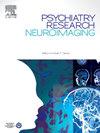Exploring the feasibility and acceptability of using fMRI to measure pain responses in women with and without postpartum depression
IF 2.1
4区 医学
Q3 CLINICAL NEUROLOGY
引用次数: 0
Abstract
Little is known about differences in pain perception among depressed versus non-depressed postpartum women. This novel study aimed to determine the feasibility and acceptability of enrolling non-depressed and depressed postpartum women in a laboratory-induced pain study using fMRI. Eleven non-depressed and two depressed postpartum women participated in a cold pain-induced experiment using fMRI. Feasibility and acceptability were assessed. Brain activation of the pain-associated regions of interest was measured. Participants provided subjective pain ratings (i.e., intensity and unpleasantness). The results indicated that enrolling postpartum women in a laboratory-induced pain study using fMRI is feasible. Participants found the study acceptable. The findings showed that the study’s pain device activated the amygdala and insula in the non-depressed group, with activation in the anterior cingulate cortex being marginally significant. Exploratory analyses of differences in brain activation by depression status were not statistically significant. There was a significant and positive association between depressive symptoms and pain unpleasantness. Subjective pain ratings differed by depression status but were not statistically significant. This study showed that conducting a pain experiment using fMRI with postpartum women is feasible and acceptable. Future research should include a larger sample to confirm findings and investigate the impact of depression on pain responses.
探讨使用功能磁共振成像测量产后抑郁症妇女疼痛反应的可行性和可接受性
关于产后抑郁与非抑郁女性在疼痛感知上的差异,我们知之甚少。这项新颖的研究旨在确定利用功能磁共振成像技术对非抑郁和抑郁产后妇女进行实验室诱发疼痛研究的可行性和可接受性。11名非抑郁症妇女和2名产后抑郁症妇女利用功能磁共振成像技术参与了一项由感冒引起的疼痛实验。评估可行性和可接受性。测量了与疼痛相关的感兴趣区域的大脑激活。参与者提供主观疼痛等级(即强度和不愉快程度)。结果表明,利用功能磁共振成像技术对产后妇女进行实验室诱发性疼痛研究是可行的。参与者认为这项研究是可以接受的。研究结果显示,该研究的疼痛装置激活了非抑郁组的杏仁核和脑岛,而前扣带皮层的激活程度微乎其微。探索性分析表明,抑郁状态对脑活动的影响无统计学意义。抑郁症状与疼痛不愉快之间存在显著的正相关。主观疼痛评分因抑郁状态而异,但无统计学意义。本研究表明,利用功能磁共振成像技术对产后妇女进行疼痛实验是可行和可接受的。未来的研究应该包括更大的样本来证实研究结果,并调查抑郁对疼痛反应的影响。
本文章由计算机程序翻译,如有差异,请以英文原文为准。
求助全文
约1分钟内获得全文
求助全文
来源期刊
CiteScore
3.80
自引率
0.00%
发文量
86
审稿时长
22.5 weeks
期刊介绍:
The Neuroimaging section of Psychiatry Research publishes manuscripts on positron emission tomography, magnetic resonance imaging, computerized electroencephalographic topography, regional cerebral blood flow, computed tomography, magnetoencephalography, autoradiography, post-mortem regional analyses, and other imaging techniques. Reports concerning results in psychiatric disorders, dementias, and the effects of behaviorial tasks and pharmacological treatments are featured. We also invite manuscripts on the methods of obtaining images and computer processing of the images themselves. Selected case reports are also published.

 求助内容:
求助内容: 应助结果提醒方式:
应助结果提醒方式:


